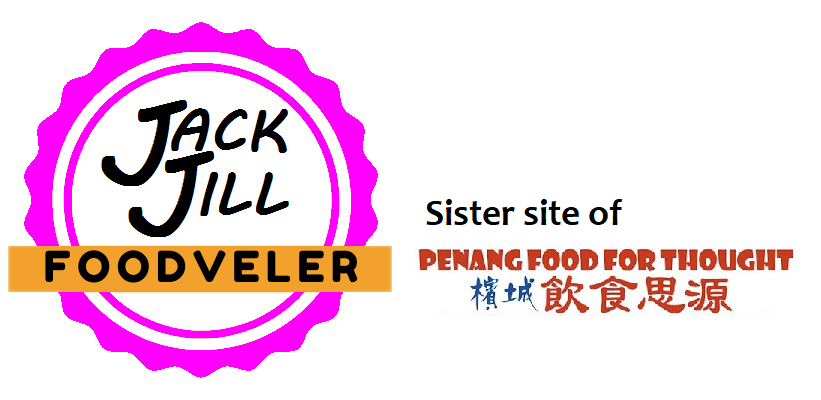The main ingredient for sushi is rice, obviously. To be exact, sushi uses short-grain Japanese rice. This type of rice is more sticky than the long-grain counterparts, making the former more suitable for making sushi.
The rice is steamed with several cups of rice vinegar and a dash of salt and sugar. The cooked rice is left to cool to room temperature before being used to prepare various sushi dishes.
For the case of certain types of sushi (Nigirizushi), Sushi King has a machine that prepares loose rice into rectangular shapes. This reduces reliance on manual manpower, but I believe high-end Japanese restaurants refrain from doing so to maintain the “human touch”.
Firstly, the instructor explained the various ingredients commonly used to prepare sushi. It is obvious that hygiene is of utmost importance, because each item is plastic wrapped until ready to use. In addition, we are required to wear plastic gloves and shower caps when preparing food, just like the employees.
Besides rice, one of the most common ingredient is Nori (海苔), thin pieces of seasoned seaweed. Nori is used in many sushi dishes, particularly Temaki, Makizushi and Gunkanmaki. Even certain types of Nigirizushi uses Nori to hold ingredients in place.
Another well-sought ingredient is Sake (サケ), which is thin cuts of raw salmon flesh. Although salmon is commonly associated to Japanese cuisine, it is not common knowledge that this ingredient was only introduced quite recently when refrigeration was widely available. This means that if you time-traveled to medieval Japan, salmon is not part of your regular Japanese diet (provided that you are aristocratic enough to afford premium seafood).
Maguro (マグロ) or tuna is another type of fish commonly used in sushi dishes. For this case, we have it minced, similar to what we use to make sandwiches
The small, orange, slightly salty spheres commonly used to garnish sushi dishes is Masago (真砂子) or smelt roe. Nowadays, this ingredient can be bought from selected supermarkets in conveniently-packaged tube.
Tamago (卵) is a kind of Japanese omelette, usually cooked with sugar added to give it a sweet taste. Tamago can be served as a snack dish itself, or used as an filling for certain sushi dishes.
Another common ingredient in cheaper Japanese restaurants is Kani Kama (カニカマ) or crabsticks. Despite its name, crabsticks is not made from crab meat. Instead, it is highly processed fish meat, flavored and colored to imitate the taste of crabs. If you are a natural food crusader, you should avoid this ingredient completely.
As a garnish for certain Japanese dishes and key filling in most Temaki, grated Daikon (大根) and Kyuri (キュウリ) are used. Daikon and Kyuri are white radish and cucumber respectively. These ingredients are useful because they provide moisture and crunchiness to the rice and Nori, which tend to taste dry in the mouth. Sometimes for cheaper Makizushi dishes, Kyuri is also available in long stripes to form the center of the roll.
Mayonnaise (マヨネーズ) is a Westernized ingredient that was not part of original Japanese cuisine. In fact, the Far East did not consume dairy products (milk, cheese, yogurt etc) until recently. This explains why many East Asian adults are lactose intolerant.
There are 5 types of sushi that are taught today. The instructor demonstrates the procedure for each dish several times. Then, we practice the steps by ourselves, with varying degrees of success.
Nigirizushi (握り寿司) is made by a rectangular clump of rice traditionally shaped by hand. However, Sushi King uses a machine to speed up the process. On top of the rice is a piece of ingredient, such as Sake or Kani Kama. In cases where the ingredient does not stick well with the rice, it is held in place by a thin strip of Nori.
Using a bamboo mat called Makisu (巻き簾), we are taught how to prepare some Makizushi (巻き寿司). Rice is placed on top of the mat, followed by ingredients such as Kyuri. Then, the mat is rolled so that the rice forms a cylindrical shape with the ingredient in the middle. Then, the cylinder is cut in lengths of approximately 2 centimeters each.
A related dish is the California Roll (カリフォルニアロール) where the rice is on the outer layer. Typically, the rice is dipped in Masago to give it some visual appeal. As expected, the California Roll was created and popularized in California, making it an example of non-traditional Japanese fusion cuisine.
Gunkanmaki (軍艦巻) takes the shape of a warship. A piece of Nori is wrapped around a small clump of rice in the shape of a vessel. Then, loose or fine ingredients like Maguro or Masago is added to the top. More expensive Gunkanmaki dishes may feature more exotic toppings such as sea urchin.
And finally, we are taught the steps to make Temaki (手巻). Using Nori folded in the shape of a cone, rice and other fillings are inserted to the wide end. Common fillings used are grated Daikon, grated Kyuri, Tamago and Masago. Since it is awkward to use chopsticks to handle this dish, Temaki is usually eaten by hand. Temaki needs to be consumed quickly because the fillings will make the Nori soggy and difficult to tear.
When the class is over, we are each served with a pack of Mixed Bento each. It comes in a typical take-away box with dishes in different partitions.
Most dishes are Tempura (天ぷら), using ingredients shrimps, squid, fish, eggplant, sweet potato etc.
There is also Kani Kama, sweet peas, Tamago, Takuan (沢庵) or pickled white radish and grated Daikon.
The Mixed Bento is just something simple put together after an enjoyable culinary lesson.



